10 Essential Tips for Choosing the Right Feed Machine for Poultry
Table of Contents
- Factors to Consider Before Purchasing a Poultry Feed Machine
- Understanding Different Types of Feed Machines for Poultry
- Evaluating the Capacity Requirements for Your Poultry Operation
- Key Features to Look for in Quality Feed Machines
- Budgeting: Finding a Feed Machine That Meets Your Financial Needs
- Maintenance and Support: Ensuring Longevity of Your Feed Equipment
- FAQS
- Conclusion
- Related Posts
In the dynamic poultry industry, selecting the right feed machine for poultry is crucial for optimizing production efficiency and ensuring animal health. According to research conducted by the Food and Agriculture Organization (FAO), the global poultry feed market is projected to reach approximately USD 400 billion by 2025, highlighting the significant demand for advanced feed processing technologies.
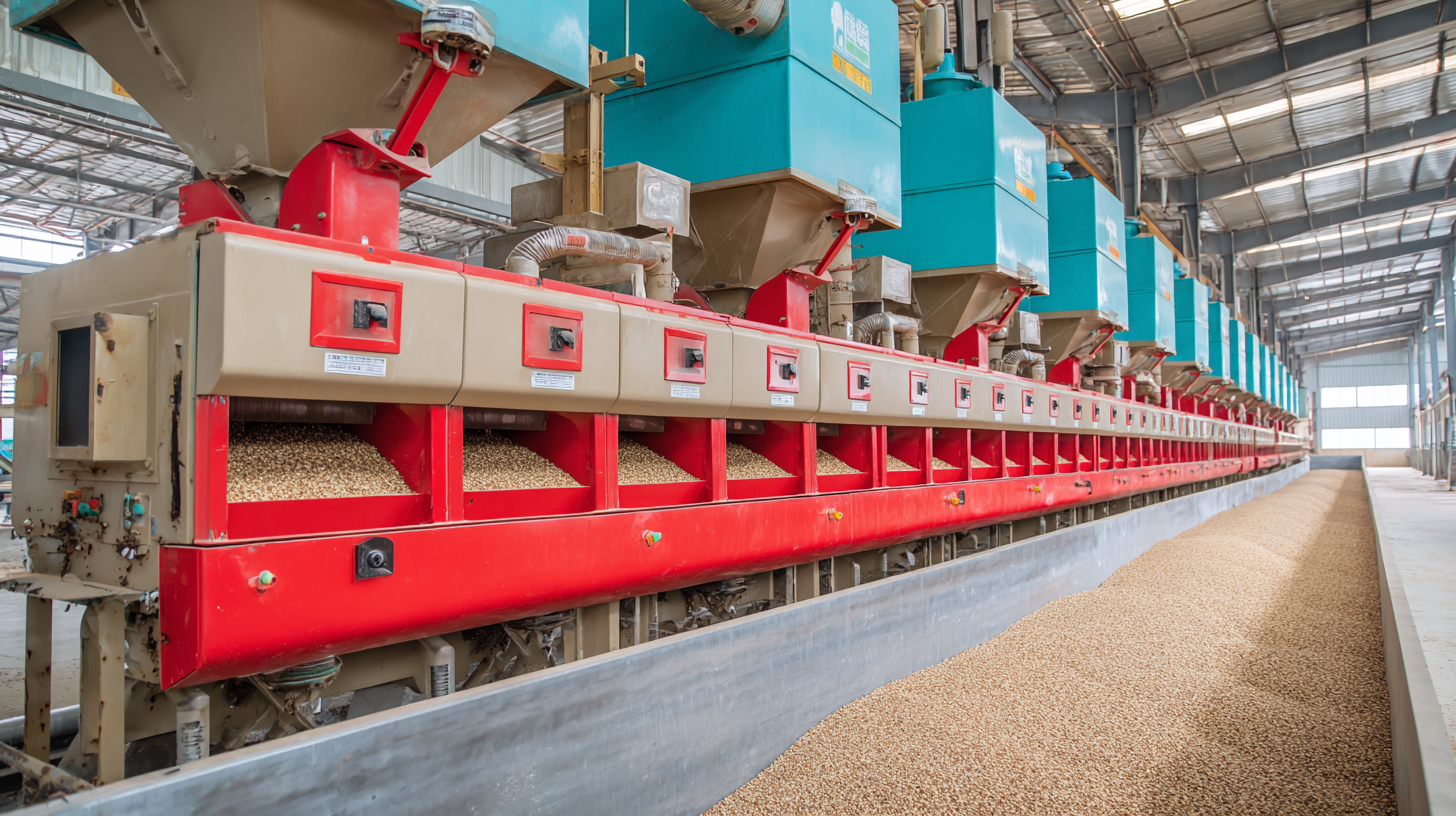
Shanghai Zhengyi Machinery Engineering Technology Manufacturing Co., Ltd., CPSHZY, brings over 25 years of expertise in manufacturing high-quality feed processing machinery and pellet mill dies, addressing the growing needs of feed plants and aquaculture farms. This blog will explore 10 essential tips for choosing the appropriate feed machine for poultry, equipping producers with the knowledge to enhance their operations while contributing to sustainable practices in the industry.
Factors to Consider Before Purchasing a Poultry Feed Machine
When considering the purchase of a poultry feed machine, there are several critical factors that you should evaluate to ensure you make the right decision. For starters, it’s important to assess the machine’s capacity and efficiency. Recent industry reports indicate that advancements in technology have significantly boosted the productivity of agricultural equipment, and investing in a high-capacity feed machine can streamline your operations and improve feed quality.
Another pivotal aspect to mull over is the environmental impact and sustainability of the machine. According to a recent survey, consumers are increasingly prioritizing environmental sustainability when purchasing goods. This shift in consumer behavior is evident in reliance on suppliers who have robust Environmental, Social, and Governance (ESG) strategies. Thus, you should look for feed machines that not only enhance production but also adhere to eco-friendly standards, reducing your overall carbon footprint while aligning with market trends that favor sustainable practices.
Finally, consider the after-sales support and spare parts availability when acquiring a poultry feed machine. As the demand for better service and support rises—reflected by the increasing length of ownership cycles for technology products—having access to reliable maintenance and parts becomes a crucial deciding factor. Engaging with brands that prioritize customer service can ensure your operations remain uninterrupted, maximizing productivity in your poultry business.
Understanding Different Types of Feed Machines for Poultry
When it comes to poultry farming, selecting the right feed machine is crucial for optimizing production and ensuring the health of your livestock. Understanding the various types of feed machines available on the market is the first step in making an informed decision. There are several categories, including hammer mills, pellet mills, and mixers, each serving different purposes and fitting different operational needs. Pellet mills, for instance, are particularly beneficial for producing high-density feed pellets that enhance nutrient intake for poultry.
At Shanghai Zhengyi Machinery Engineering Technology Manufacturing Co., Ltd. (CPSHZY), we pride ourselves on over 25 years of experience in manufacturing feed processing machinery. Our expertise extends to the large-scale production of pellet mill dies, which are essential components in the efficient production of quality feed. We also provide comprehensive environmental protection solutions tailored for feed plants and aquaculture farms, ensuring that your operations not only meet industry standards but also contribute to sustainable practices. Choosing the right machinery, therefore, involves not only considering the types of machines available but also partnering with established providers who can offer integrated solutions and expert advice.
Understanding Different Types of Feed Machines for Poultry
This chart represents the various types of feed machines suitable for poultry, showcasing their efficiency ratings and market share in the industry.
Evaluating the Capacity Requirements for Your Poultry Operation
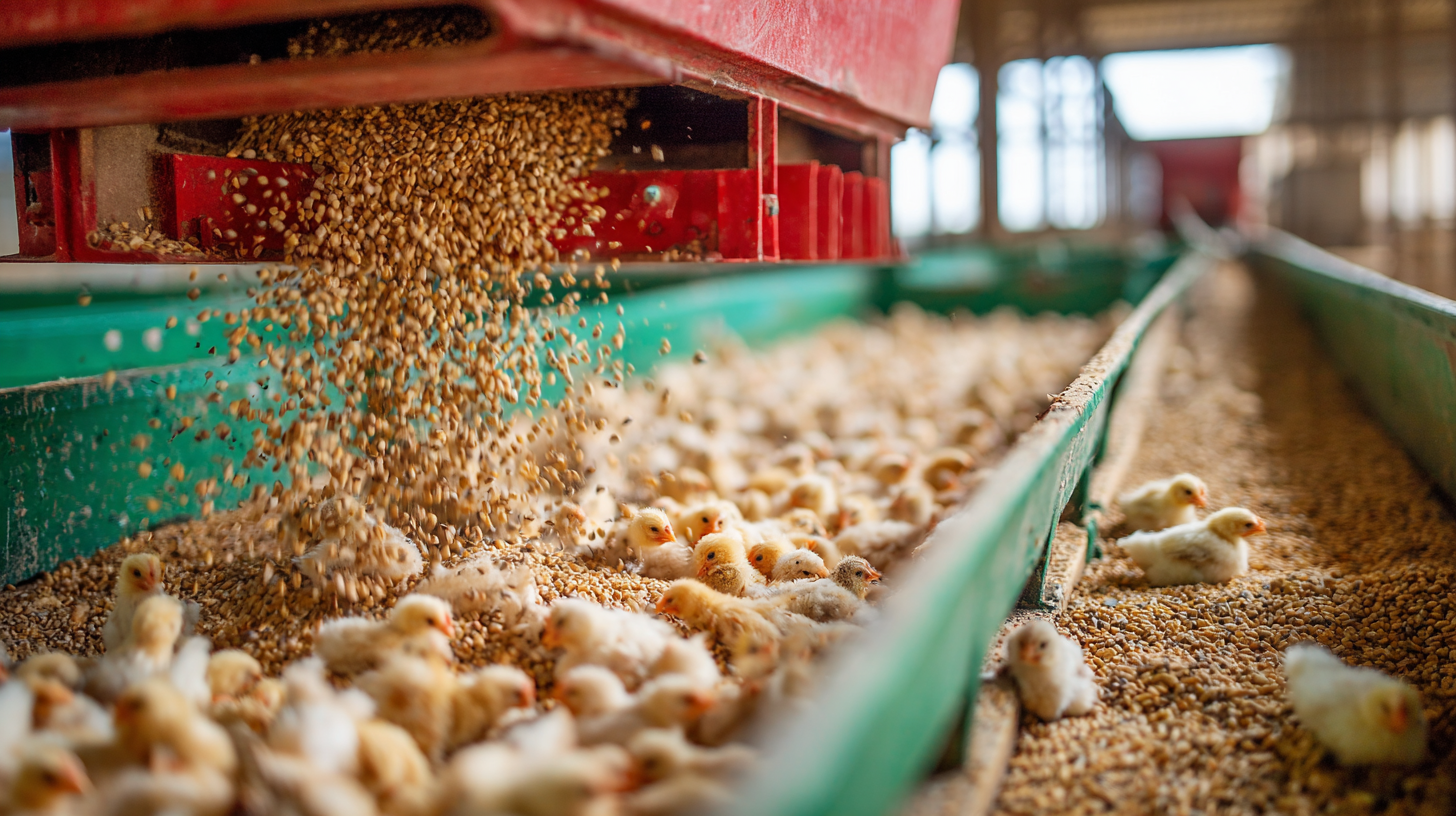 When evaluating the capacity requirements for your poultry operation, understanding your flock size and growth expectations is crucial. A smaller operation may benefit from a compact feed machine that can handle modest volumes, while larger farms might require machines with higher throughput capabilities. Always assess your current production levels and future growth plans to ensure the feed machine you choose can accommodate your needs over time.
When evaluating the capacity requirements for your poultry operation, understanding your flock size and growth expectations is crucial. A smaller operation may benefit from a compact feed machine that can handle modest volumes, while larger farms might require machines with higher throughput capabilities. Always assess your current production levels and future growth plans to ensure the feed machine you choose can accommodate your needs over time.
Another important tip is to consider the different feed types and their specific requirements. For instance, if you plan to handle multiple feed formulations, flexibility in your machine's design will save you time and money in the long run. Look for machines equipped with interchangeable parts that allow easy adjustments between various feeds, ensuring seamless operations regardless of your production demands.
Lastly, examine the machine’s efficiency ratings. A well-designed feed machine should not only meet your capacity requirements but also operate efficiently, reducing waste and energy costs. Always check for user reviews and performance data to gauge how well the machine performs under your expected operational load.
Key Features to Look for in Quality Feed Machines
When selecting the right feed machine for poultry, understanding key features is essential to ensure optimal performance and efficiency. Quality feed machines should incorporate advanced technology that enhances feed processing efficiency, as indicated by recent industry reports suggesting that such machines can boost production rates by up to 30%. Features like precise ingredient dosing, integrated mixing systems, and efficient pelletizing processes are critical in achieving high-quality feed that meets nutritional requirements and ensures better poultry growth rates.
Additionally, the durability and service quality provided by manufacturers are vital considerations. Reports show that manufacturers with strong reputations in the industry are preferred by over 70% of operators when it comes to equipment reliability and technical support. Prioritizing machines that offer comprehensive warranties and responsive customer service can significantly reduce downtime and maintenance costs, ultimately impacting the profitability of poultry operations. Investing in machinery that aligns with these features can lead to sustainable practices and better market competitiveness in the rapidly evolving agricultural environment.
10 Essential Tips for Choosing the Right Feed Machine for Poultry - Key Features to Look for in Quality Feed Machines
| Feature | Importance | Recommended Specification | Notes |
|---|---|---|---|
| Capacity | Determines production efficiency | 500-2000 kg/hour | Choose based on flock size |
| Durability | Longevity of the machine | Steel construction | Look for anti-corrosive materials |
| Energy Efficiency | Reduces operational costs | Check for energy ratings | |
| Ease of Cleaning | Maintains hygiene standards | Quick-release components | Necessary for disease prevention |
| Versatility | Accommodates different feed types | Multi-functional design | Saves on multiple machines |
| Safety Features | Protects operators | Emergency stop button | Essential for safe operation |
| Customer Support | Assistance with troubleshooting | 24/7 availability | Ensure quick issue resolution |
| Warranty | Protects your investment | 2-5 years | Longer warranties are preferable |
| User-Friendliness | Easier operation and training | Intuitive controls | Reduces training time |
| Size | Fits your available space | Compact design | Consider your facility layout |
Budgeting: Finding a Feed Machine That Meets Your Financial Needs
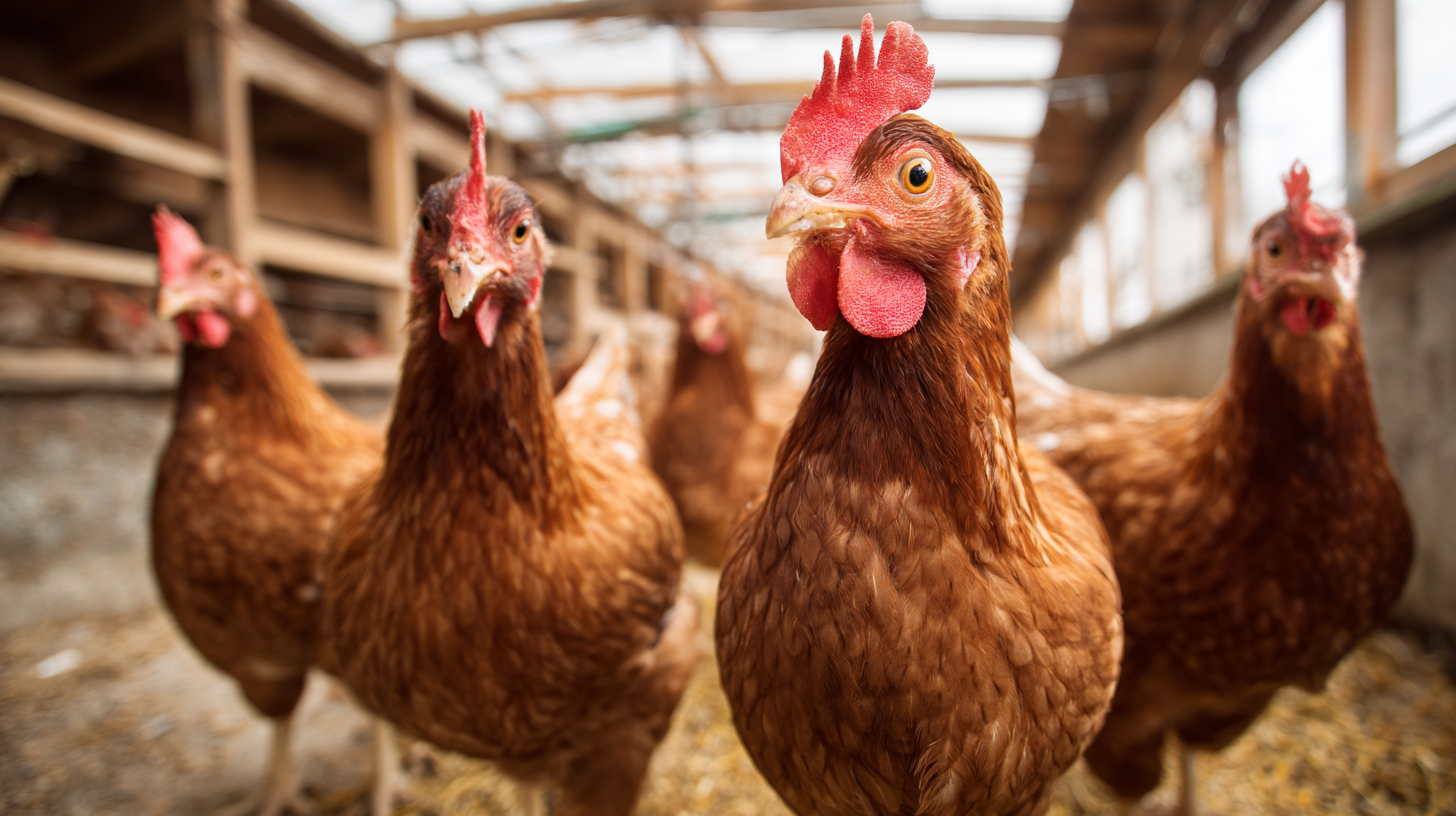 When selecting a feed machine for poultry operations, budgeting is one of the most crucial aspects to consider. The initial investment can vary significantly depending on the machine's capacity, features, and brand. According to industry reports, small to medium-sized farmers can expect to invest anywhere between $5,000 to $50,000 for a reliable feed machine, depending on their production needs. Understanding the total cost of ownership, including maintenance and operational expenses, is vital for making an informed purchase that aligns with financial constraints.
When selecting a feed machine for poultry operations, budgeting is one of the most crucial aspects to consider. The initial investment can vary significantly depending on the machine's capacity, features, and brand. According to industry reports, small to medium-sized farmers can expect to invest anywhere between $5,000 to $50,000 for a reliable feed machine, depending on their production needs. Understanding the total cost of ownership, including maintenance and operational expenses, is vital for making an informed purchase that aligns with financial constraints.
In today’s technologically advanced landscape, integrating intelligent technology can also play a role in budgeting. Many companies are leveraging AI-powered financial tools to optimize their spending and forecasting processes. This shift is not limited to large corporations; even small-scale poultry farms are beginning to adopt such technologies. For example, a recent study indicated that businesses utilizing AI-driven financial planning have improved their budgeting accuracy by up to 30%. As feed machines become more sophisticated, ensuring that the chosen machine not only fits the budget but also adapts to future technological advancements is essential. The right balance can facilitate sustainable growth and better financial health for poultry operations.
Maintenance and Support: Ensuring Longevity of Your Feed Equipment
When selecting the right feed machine for poultry, maintenance and support play a crucial role in ensuring the longevity of your equipment. Regular maintenance not only prolongs the lifespan of feed machines but also enhances their performance and efficiency. According to recent reports, active preventive maintenance can increase factory uptime by as much as 15%. This proactive approach to maintenance is vital, particularly in the poultry industry, where consistent feed quality and machine reliability are essential for operational success.
Integrating modern predictive maintenance strategies is key to optimizing the performance of feed machines. Leveraging AI tools can accurately predict equipment failures and maintenance needs, allowing for timely interventions that prevent downtime. The shift towards a product-service system operation mode in equipment maintenance highlights a growing trend in maximizing the longevity of agricultural machinery. By focusing on both technical support and routine maintenance, poultry operations can achieve not just operational efficiency but also significant cost savings over time. Adopting these strategies will ensure that your feed machines remain productive and reliable for years to come.
FAQS
: There are several types of feed machines, including hammer mills, pellet mills, and mixers, each designed for specific purposes. Pellet mills, for example, are particularly useful for producing high-density feed pellets that improve nutrient intake for poultry.
Depending on the machine's capacity, features, and brand, initial investments can range from $5,000 to $50,000 for small to medium-sized farmers. It's important to also consider the total cost of ownership, including maintenance and operational expenses.
Many companies are now using AI-powered financial tools to enhance budgeting accuracy. Recent studies show that businesses using these technologies have improved their budgeting accuracy by up to 30%, which can benefit small-scale poultry farms as well.
Regular maintenance is crucial for prolonging the lifespan and enhancing the performance of feed machines. Active preventive maintenance can increase factory uptime by as much as 15%, ensuring consistent feed quality and machine reliability.
Predictive maintenance involves using AI tools to forecast equipment failures and maintenance needs. This allows for timely interventions to prevent downtime, helping to optimize the performance and longevity of feed machines.
Partnering with established providers like CPSHZY, which offers comprehensive environmental protection solutions, ensures that poultry operations not only meet industry standards but also contribute to sustainable farming practices.
Consider the types of machines available, your specific operational needs, budget constraints, and the potential for future technological advancements to ensure that the feed machine supports both current and future goals.
Integrating intelligent technology, such as AI-driven tools for financial planning and predictive maintenance, can enhance budgeting accuracy, optimize machine performance, and contribute to more efficient poultry operations.
Technical support, coupled with routine maintenance, is essential for maximizing the longevity and reliability of feed machines, contributing to operational efficiency and significant cost savings over time.
Conclusion
When choosing the right feed machine for poultry, several critical factors should be taken into account. First, understanding the various types of feed machines and their specific functionalities will help in making an informed decision. It's essential to evaluate the capacity requirements based on the scale of your poultry operation, ensuring that the machine can meet your production needs without compromising on efficiency. Additionally, consider key features that enhance performance, such as durability, ease of use, and maintenance convenience. Budgeting is another vital aspect, as finding a feed machine that aligns with your financial resources while offering quality is crucial for long-term success.
Moreover, partnering with a reputable manufacturer like Shanghai Zhengyi Machinery Engineering Technology Manufacturing Co., Ltd. ensures you receive a reliable feed machine for poultry backed by excellent maintenance and support services. With over 25 years of experience in the industry, CPSHZY specializes in producing high-quality feed processing machinery, making them a trusted choice for those looking to optimize their poultry operations.
Related Posts
-

7 Essential Features of the Best Poultry Feed Machine for Global Buyers
-

Unlocking Efficiency in Livestock Management with the Ultimate Feed Mixer Machine
-

Global Buyers Choose Powerhouse Factories for Superior Feed Machines Made in China
-
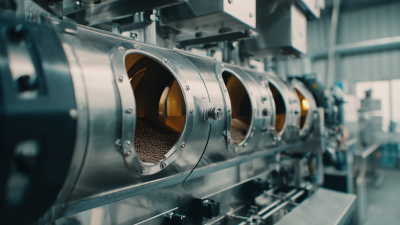
Innovative Solutions for Enhancing Your Feed Mill Mixer Performance
-
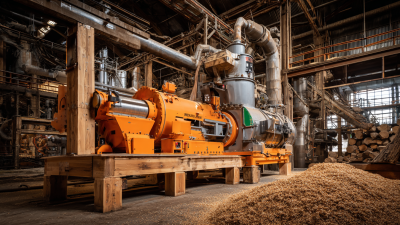
The Future of Sustainable Production with Advanced Pellet Mill Technologies
-

How to Navigate Import and Export Certifications for Best Mould Tech Industries
Blog Tags:

